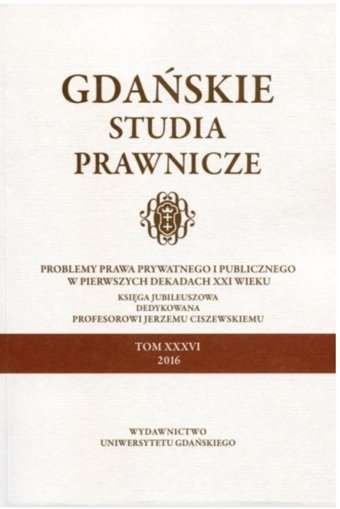Strefa przyległa jako obszar morski kontroli prewencyjnej
Contiguous Zone as a Market Area of Preventive Control
Author(s): Dorota PyćSubject(s): Law, Constitution, Jurisprudence, International Law
Published by: Wydawnictwo Uniwersytetu Gdańskiego
Summary/Abstract: The article presents a few general comments on the preventive control over the contiguous zone. According to the United Nations Conventions on the Law of the Sea, contiguous zone is a marine space contiguous to the territorial sea, in which the coastal State may exercise the control necessary to prevent and punish the infringement of its customs, fiscal, immigration or sanitary laws and regulations within its territory or territorial sea (art. 33(1)UNCLOS). The maximum breadth of the contiguous zone is twenty-four nautical miles (art. 33(2) UNCLOS). The control over contiguous zone is preventative, but a strict reading of Article 33 UNCLOS does not allow coastal States to exercise legislative jurisdiction, but only “preventative and repressive control” (enforcement jurisdiction). However, it is worth to point out that currently the contiguous zone is becoming important for the purpose of regulation of irregular migration, illegal traffic in drugs, terrorism at sea or underwater cultural heritage. Therefore, it seems that the contiguous zone as a legal institution will be subject to future changes in the international law of the sea. The Republic of Poland established its own contiguous zone in 2015. The amended legislation will allow to improve the enforcement of relevant legislation. Furthermore, this kind of preventative control can be used to combat the serious problems in reality and to improve the protection of marine resources of the exclusive economic zone as well as the underwater cultural heritage.
Journal: Gdańskie Studia Prawnicze
- Issue Year: 2016
- Issue No: XXXVI
- Page Range: 379-396
- Page Count: 18
- Language: Polish

